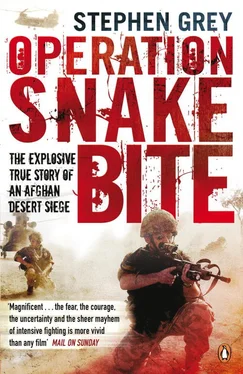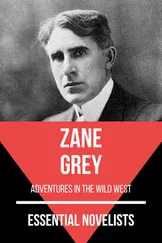Dannatt seemed candid about what had been going wrong. He argued the initial deployment to Helmand was under-strength and under-resourced, mainly because of a judgement by Tony Blair that ‘we’d be substantially out of Iraq’ by the time they were deployed to Helmand. ‘We would never have knowingly engaged on two major operations to run simultaneously with an army organized to do one,’ he said. At the same time, there was far too much wishful thinking that the population in southern Afghanistan would welcome NATO troops with open arms ‘and would quickly see us as beneficial’. Instead the reaction was ‘rather similar to prodding the lion who was otherwise kipping in the corner, minding his own business’.
Troops became too engaged in fighting an enemy they called the Taliban but whose soldiers were often just local men.
David Richards, who was due to replace Dannatt as head of the army in August 2009, was even more critical of early British actions in Helmand, particularly in the period in 2006 when he was NATO commander in Kabul but was yet to be given charge over British troops deployed in the south.
According to Richards, the first British deployment had spread itself far too thinly for a combination of reasons including ‘over-optimism, over-confidence and a misunderstanding of the intelligence picture’, as well as pressure from the then Helmand governor. The result was that the British became stuck in small platoon houses, besieged by the Taliban. ‘They were achieving little civil effect and were starting to alienate everybody from Karzai downwards.
It was this absence of ‘civil effect’ – the failure to go beyond the fighting and do something concrete for the Afghan people – that continued to be the anvil of a great divide in opinions.
Time and again, front-line soldiers lamented the absence of engineers or development experts alongside them to repair the war damage and deliver aid to an impoverished country. The lead for such work lay with the Foreign Office and the Department for International Development (DfID). But security concerns and health and safety rules, according to the soldiers, had kept their officials and experts far from the front lines.
‘I find it frustrating,’ said Richards, ‘that in the army for example we’ve got people who could do a lot of this but we’re prevented from doing it because it’s considered a civilian’s job.’
At the Foreign Office officials smarted at this kind of criticism. A senior official pointed to an ‘absence of serious planning’ that had bedevilled the Helmand deployment. He said, ‘Development experts aren’t formed up like an army battalion. They can’t just be flown out at the drop of a hat. And it’s no good complaining the civilians aren’t there with you if they haven’t been involved from the outset.’ In Helmand, many soldiers envied the American approach, where ground-level military commanders had access to not only a powerful corps of engineers but also a large pot of money to spend rapidly on quick-start projects like building bridges or health clinics.
The British approach was different, focused on mentoring the Afghan government to deliver the aid and organize the reconstruction themselves. While American aid emphasized that it was delivered ‘from the American people’, British aid tended to be more covert, funding local contractors and charities, for example, who could disguise their involvement with the coalition.
For Air Chief Marshal Sir Jock Stirrup, the chief of the defence staff, the British approach of ‘exercising Afghan muscles’ made sense. ‘Let’s face it, most of these muscles, where they exist, are pretty atrophied at the moment. So, there’s only a limited amount they can do. But you do have to work them, you have to exercise them, you have to build them up. If you don’t do that, then you don’t have any long-term sustainable solution.’
In Kabul, Cowper-Coles was forthright in his condemnation of quick-fix reconstruction. The view that ‘hearts and minds’ could be won over by development spending was naive.
‘Our military could bring in legions of engineers and experts and do all the reconstruction ourselves but that would be akin to military colonization – it’s like putting a patient in an intensive care unit and on an adrenalin drip: it does produce an improvement in the vital signs, but it’s not sustainable. Curiously, our rather more muddled British way may actually produce the more sustainable effect.
‘There is a mindset among some that if you sink a well or rebuild a school you somehow win consent of the population.’ Cowper-Coles described visiting a school and hospital that had been rebuilt with US money in 2004 and then ‘taken and trashed by the Taliban’ two years later. ‘Westerners are impatient, they want to get on with things. They want to show they’ve made a difference. But you could tar all the roads you want in Musa Qala, build all kinds of things but… that is not what will make the population resist the Taliban from coming back in. What will make the population resist the Taliban is the sense that the Afghan government is in charge and that the Afghan government is there to stay, with our support as necessary.
‘This country is littered with shiny things built by the Russians, but, as the Russians learned to their cost, they don’t actually win the sustainable consent of the population.’
Brigadier Andrew Mackay, though, would describe such talk of long-term thinking as a cover for an inexcusable delay in helping the population. Time and again, he said, he spoke to civilian experts prevented from reaching and helping a town in Helmand not because of sound development arguments but because of ‘duty of care’ rules imposed by the Foreign Office and DfID.
Although military operations were supposed to be there to support agencies like the Foreign Office and DfID, in practice ‘the military were doing the vast majority of the delivery’, he said, and there was not initially ‘a plan worthy of its name’.
Money spent on helping ordinary people was as powerful a weapon in this war as any high-powered bomb, and yet, while British soldiers were hardly trusted to use it, no one else came forward to deploy it either. ‘One of the central tenets of counter-insurgency doctrine is failing,’ Mackay warned.
* * *
Returning from the front line, many soldiers wondered if what they had achieved really fitted into a wider design.
‘I have the impression of a series of tactical successes but no real strategy or plan that gives them meaning,’ said Lieutenant Colonel Ed Smyth-Osbourne, of the Household Cavalry.
His widely shared doubts had major consequences. If capturing a hill or a town had little ultimate value in a bigger plan, then what happened if someone died – civilian or soldier – in the process? How would a commander explain to his men why their comrade had been killed?
‘That is the nature of what we call mission command,’ said Major Tony Phillips. ‘I had a basic mission to “disrupt the enemy” around Musa Qala. But it was entirely my decision when, where and how to patrol. It’s the same for every company commander; you continue to confront the enemy but when a soldier is killed you also know it was your decision that put them there. And you can’t help asking – what really was the point of that fight?’
Under Mackay and his successor, Carleton-Smith, the army seemed to be drawing together the elements of a reasonable road map for the war in Helmand, based around the classic counter-insurgency doctrines of minimizing the use of force, building local security forces that could garner local respect and aiming to design each and every operation with an eye to influencing and assisting the local population.
Читать дальше












